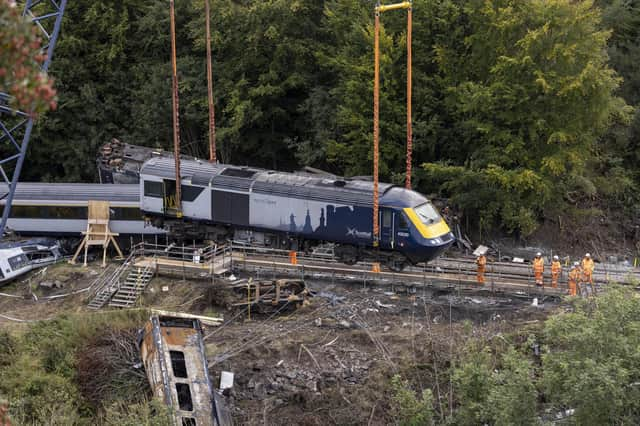Stonehaven train crash is a warning about the deadly threat posed by climate change – Scotsman comment


Driver Brett McCullough, conductor Donald Dinnie, and passenger Christopher Stuchbury were killed and six others were injured when their train derailed at Carmont after hitting stones that had been washed onto the track by heavy rain.
Whether or not global warming 'caused’ the rain to be so heavy as to dislodge the stones – it certainly made this more likely – the accidents show just how fragile vital infrastructure can be and how little change is required to create a deadly threat.
Advertisement
Hide AdAdvertisement
Hide AdAn interim Network Rail report in September warned that it was “simply not practicable” to rebuild thousands of miles of railway earthworks, some of which are more than 150 years old, so instead the focus is now on “how we manage the risk and what measures we must take to keep trains running and passengers safe”.
A Weather Advisory Task Force (WATF) was set up following the accident and has already made a series of recommendations to improve safety, including ones designed to help spot potential earthwork failures before the arrival of a train. A report in March said that the WATF believed Network Rail “urgently needs to transform the delivery of its weather services”.
However, the Transport Salaried Staffs Association has now expressed doubts about whether Network Rail will be able to implement all of the recommendations with its general secretary Manuel Cortes saying: “Sadly, I fear that with a kamikaze jobs cull and cuts across Network Rail on the horizon, they will simply fail to do this.”
Some may dismiss this as the usual union rhetoric deployed when jobs are at risk. However, given lives are also potentially at risk, it does need to be taken seriously.
Network Rail must provide concrete reassurances that it is doing everything it can to prevent a repeat of last year’s tragic accident.
And other similar organisations, governments, councils, companies and even private property owners must look to their defences. Dangerous climate change is upon us and will only get worse.
A message from the Editor:
Thank you for reading this article. We're more reliant on your support than ever as the shift in consumer habits brought about by coronavirus impacts our advertisers.
If you haven't already, please consider supporting our trusted, fact-checked journalism by taking out a digital subscription.
Comments
Want to join the conversation? Please or to comment on this article.
